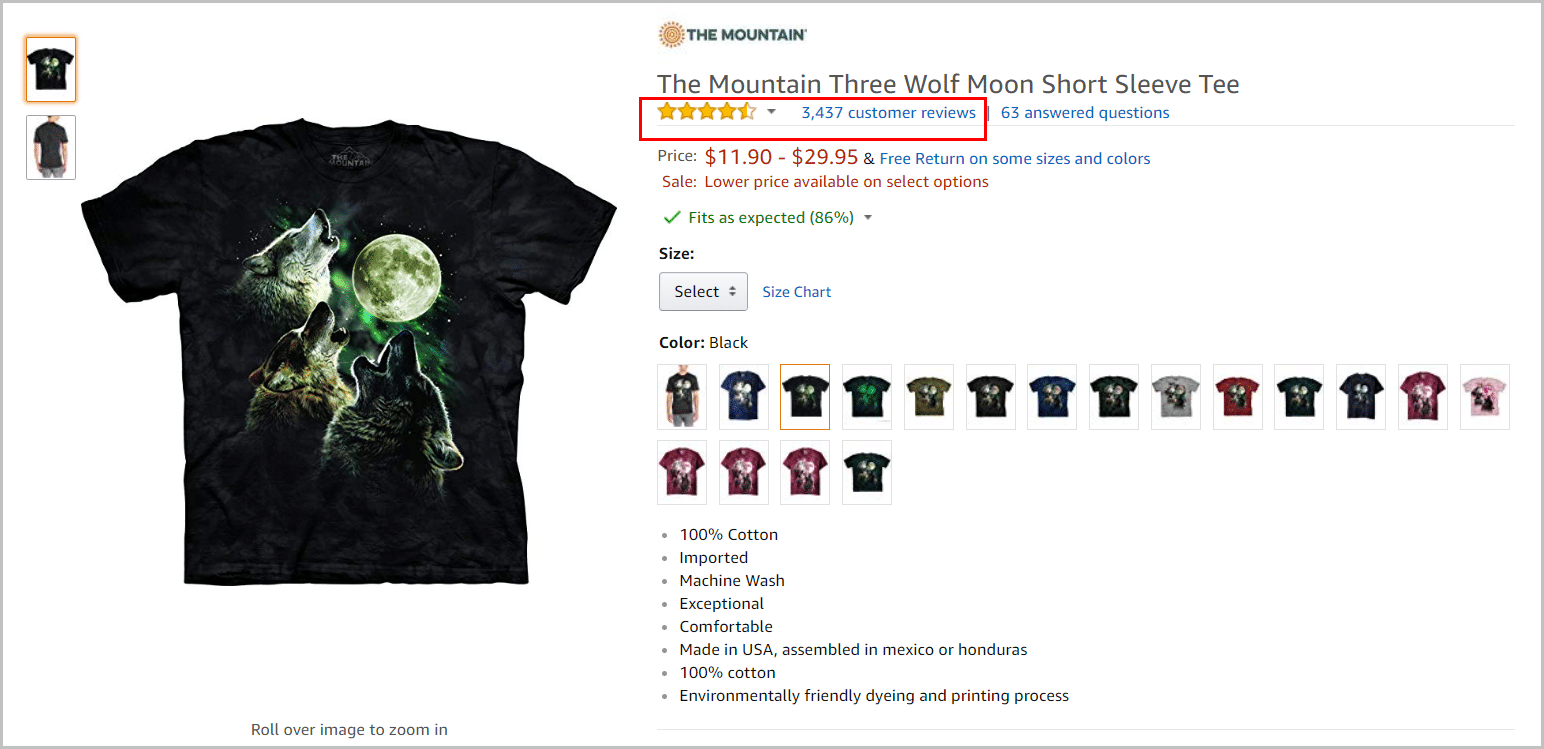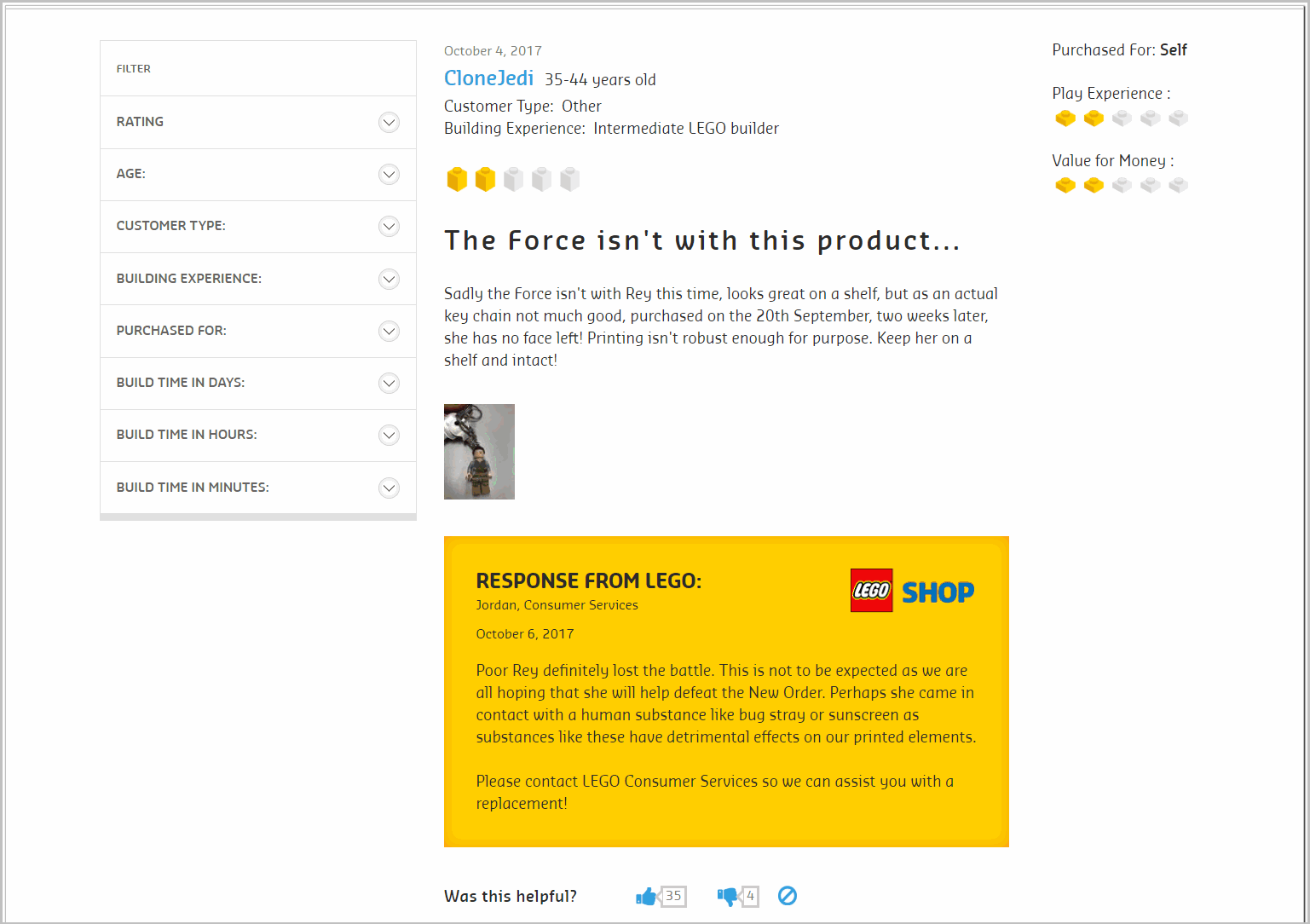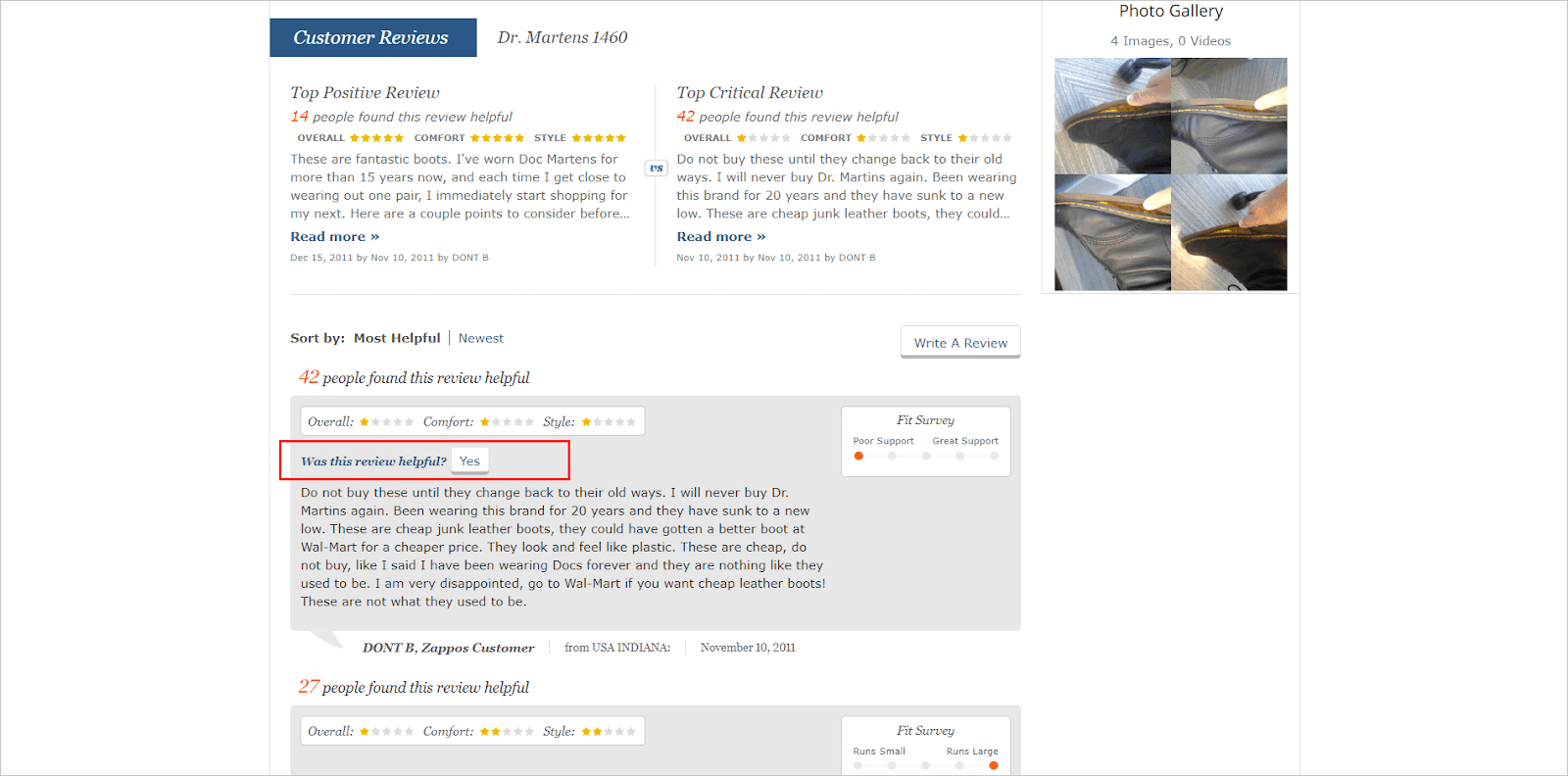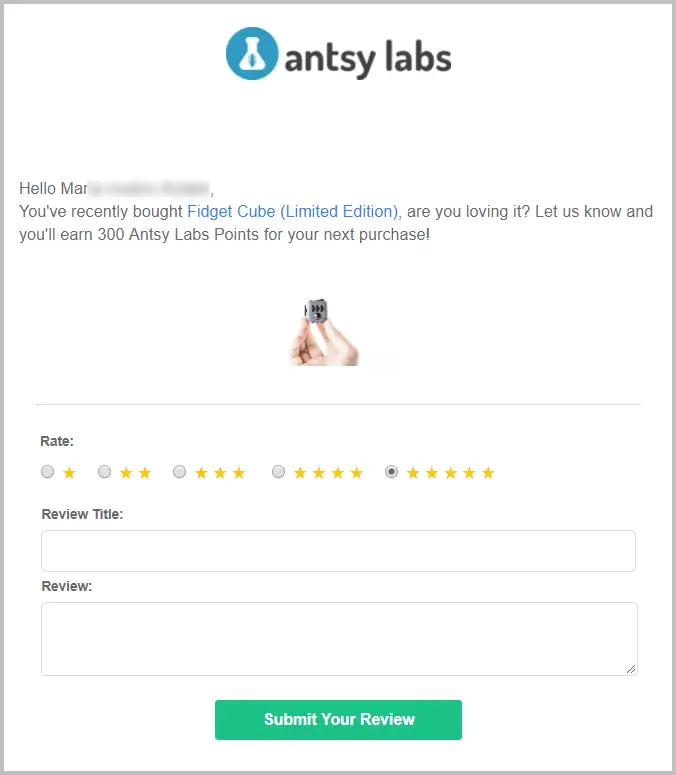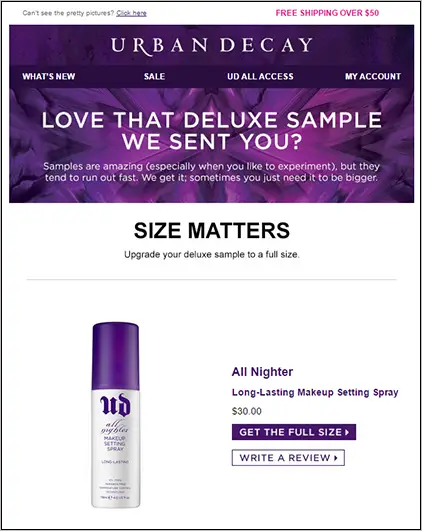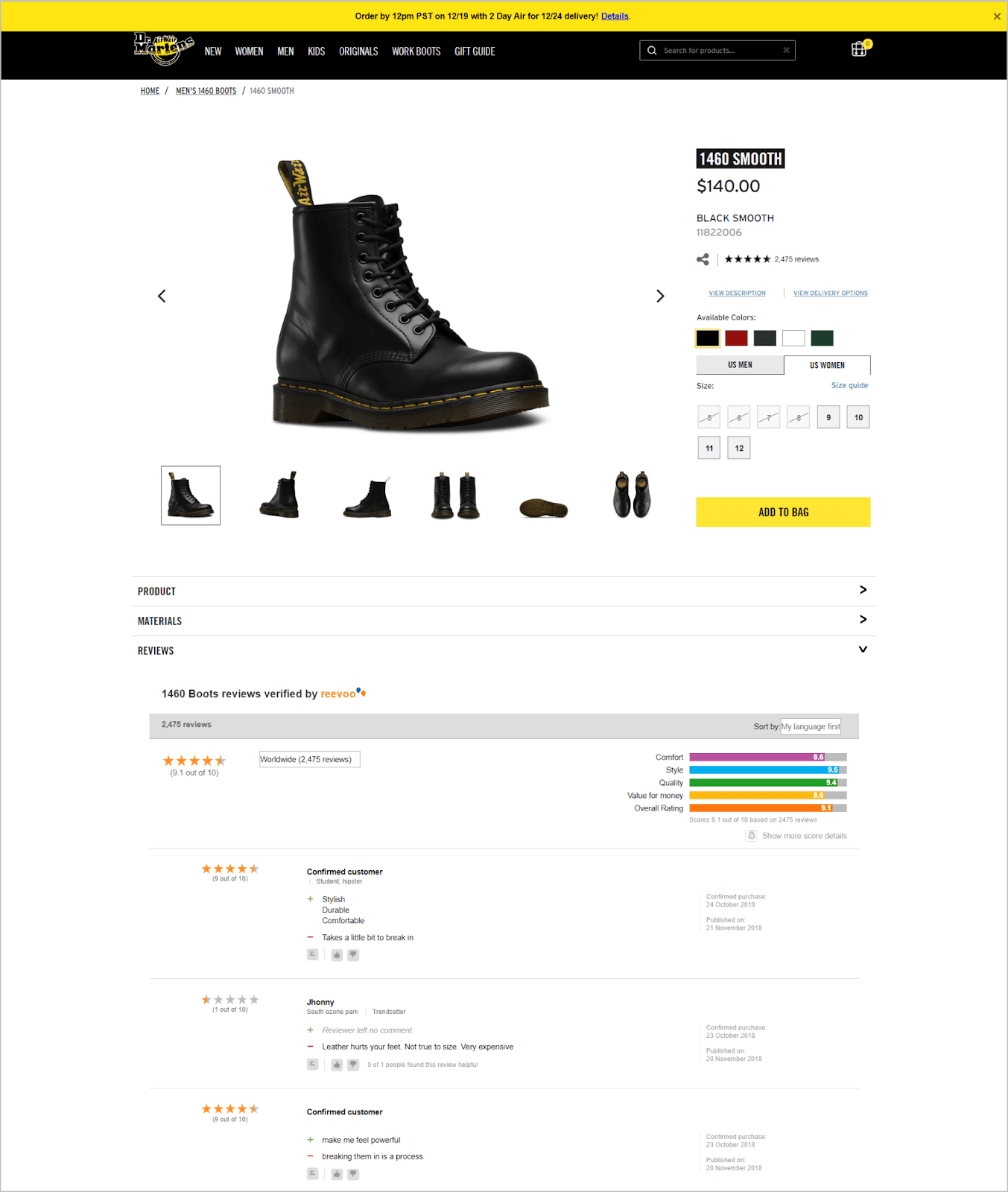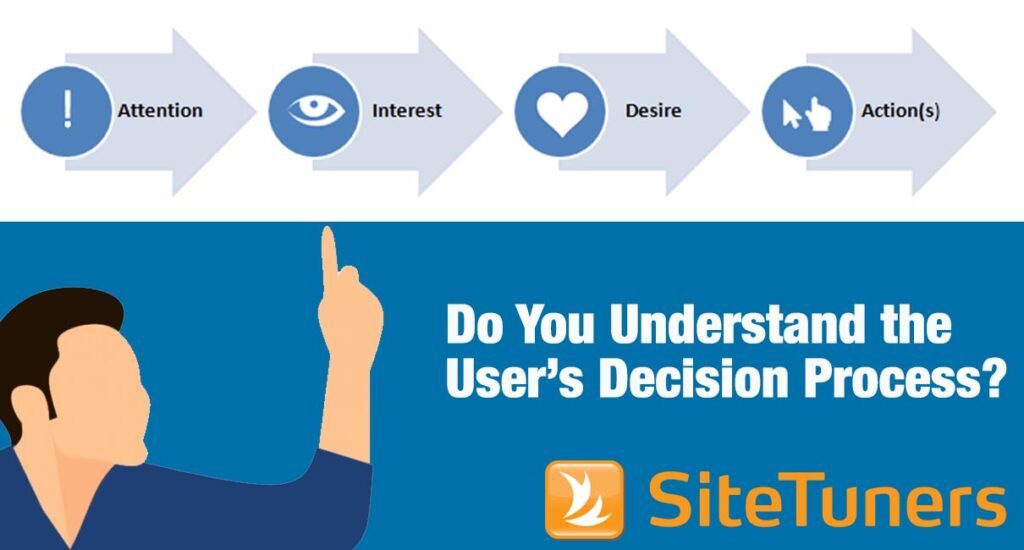Summary: Uncover the power of customer reviews and testimonials. Learn how they shape consumer behavior, build trust, and boost conversions. Discover strategies for managing reviews effectively, from showcasing them prominently to responding constructively and encouraging positive feedback. Dive into the secrets of leveraging reviews to enhance your online presence and drive business success, ultimately optimizing your conversion rate and understanding why testimonials are essential.
Introduction
In 2008, a tongue-in-cheek customer review launched a thousand sales for the Three Wolf Moon T-shirt on Amazon.
The initial review (and the subsequent thousands of satirical reviews) about how the wolves and the moon give charm and strength to whoever wears the shirt was probably not the type of customer feedback the seller wanted. Still, the case of the Three Wolf Moon T-shirt speaks to the power of social proof that comes with customer reviews, illustrating the impact of best practices for online reviews.
Three Wolf Moon shirt product detail page on Amazon
The Power of Social Proof, Customer Reviews, and Testimonials
People are social animals, and we use reviews as a shortcut to decision-making. Customer reviews and testimonials are powerful tools in this context. A testimonial is a written or spoken statement extolling the virtue of a product or service. At the same time, customer reviews are evaluations or feedback from customers who have experienced the product or service. Both are crucial in influencing consumer behavior, building trust, and highlighting why testimonials are essential.
Social media isn’t just a platform for sharing; it’s a potent tool for e-commerce conversion. Discover how you can unlock the power of social media for conversions in our article on Social e-Commerce: Unlocking the Power of Social Media for Conversions. Learn strategies to use your customers’ social networks effectively, enhancing your review marketing efforts.
Let’s delve into the profound impact of customer reviews and testimonials on consumers and businesses. According to the Local Consumer Review Survey 2017, a staggering 85% of consumers trust online reviews just as much as personal recommendations. This statistic alone showcases reviews’ immense influence in shaping consumer behavior.
- According to the Local Consumer Review Survey 2017, “85% of consumers trust online reviews as much as personal recommendations.” This statistic alone showcases reviews’ immense influence in shaping consumer behavior.
- The 2021 “Psychology of Product Reviews” survey demonstrated that the fundamental psychology that has traditionally been effective in increasing sales still underlies online purchasing behavior.
- Product reviews are also one of the three main pillars contributing to Amazon’s organic traffic with high conversion rates, as discovered by Shopper Approved in 2021.
- Meanwhile, research done by Spiegel Research Center showed that displaying reviews has the potential to boost conversions by 270%, highlighting the importance of conversion rate optimization in e-commerce.
The same Spiegel Research Center study found that reviews significantly impact purchase decisions on higher-priced and higher-consideration products more than lower-priced and lower-consideration items.
User reviews are also beneficial for physical and non-uniform items. If you’re a clothing store, for example, you might have a more challenging time converting online because a customer gets fewer experiential and sensory details (e.g., the texture and thickness of the cloth, the drape of the material over the body) at a physical store.
User reviews reduce customers’ anxiety and increase their trust that what they receive matches the product description and image. However, getting reviews wrong is easy even if you have them on your site.
Understanding the significance of customer reviews, testimonials, customer service reviews, and the source of goods reviews is vital for businesses’ marketing efforts on product review sites. They can be found on prominent consumer review websites such as Google Reviews, Amazon, Yelp, Facebook, and other critical online review platforms for getting more reviews. Due to their presence on independent sites and being contributed by actual users, customer reviews are perceived as trustworthy and reliable sources of information. Product testimonials, in particular, are very reliable indicators of a product’s quality and effectiveness, as they provide firsthand accounts of users’ experiences.
Consumers rely heavily on customer reviews, including the customer service review, throughout their buyer’s journey to gain insights into how a product functions and whether it is worth investing in. It is worth noting that customer reviews, including customer service reviews and source of goods reviews, can encompass positive experiences, negative encounters, and even erroneous claims about a business. Nonetheless, their impact remains significant, as they are considered as trustworthy as personal recommendations.
Businesses must understand that customer reviews can make or break their reputation. While reviews can provide valuable feedback and boost credibility, handling them carefully is essential as part of an effective conversion rate optimization strategy. Striking a balance between displaying authentic reviews and managing potential negative feedback is crucial for businesses to maintain consumer trust and maximize the positive impact of customer reviews and testimonials.
Optimizing Your Google My Business Profile for Enhanced Customer Engagement
When optimizing a Google My Business profile, businesses can take several steps to enhance their online presence and attract more customers. Consider the following strategies:
Provide accurate and complete information
Ensure that all the Google My Business profile details are up-to-date and comprehensive. This includes business name, address, phone number, website URL, operating hours, and other relevant information. Consistency and accuracy are crucial to establishing trust with potential customers.
Encourage customer reviews
Actively seek genuine reviews from customers. Ask satisfied customers to leave a review, but avoid trying to manipulate reviews by providing incentives or asking friends to write positive feedback. Respond to positive and negative reviews to show that you value customers’ opinions and are actively engaged with them.
Utilize Google My Business posts
Please use the Google My Business Posts feature to showcase current promotions, upcoming events, or any news that might interest customers. These posts appear prominently on the profile and can attract attention from potential customers.
Use high-quality images and videos
Allow customers to contribute photos and videos that showcase your business. Additionally, upload professional, eye-catching visuals of your products, services, or location. Visual content adds credibility and gives potential customers a glimpse into what they can expect.
Implement booking capabilities
If your business offers services that require appointments or reservations, integrate a booking button or link directly into your Google My Business profile. This feature streamlines the process for customers and encourages them to take action.
Utilize the Questions and Answers section
Engage with customers by promptly answering their questions in the Questions and Answers section. This will help customers find information quickly, demonstrate your commitment to customer service, and foster trust.
Highlight your services or menu
Ensure that your profile includes a comprehensive list of your services or menu if you are a restaurant. This will help potential customers understand what you provide without navigating another website or searching extensively.
By following these optimization strategies, businesses can maximize the effectiveness of their Google My Business profile, enhance their online visibility, and ultimately attract more customers.
Best Practices for Leveraging Customer Reviews
Maximize the benefits of customer reviews and feedback ratings in your review marketing strategy. Read on to discover how to make reviews obvious, honest, and usable. Plus, learn how to get more reviews and generate positive reviews by encouraging customers to leave positive feedback on your site.
At SiteTuners, we have a proven track record of helping businesses optimize their conversion rates by leveraging customer reviews. Explore some of our success stories and the diverse range of clients we’ve worked with.
Organizing customer testimonials effectively is crucial for maximizing their impact and getting into your customers’ heads. By analyzing the language and sentiments expressed in testimonials, you can gain valuable insights into your customers’ mindsets, motivations, and pain points. Follow best practices for organizing customer testimonials, such as creating a dedicated section on your website or a product review blog to showcase positive testimonials as part of your overall review marketing strategy. Additionally, actively seek to get reviews for your business and get more reviews by engaging with customers and making it easy for them to share their experiences.
Consider sending post-purchase emails or review generation tools to get online customer reviews. Actively encourage satisfied customers to share their experiences on your site and customer review sites and platforms. Customer service reviews on these sites are critical in shaping potential buyers’ perceptions as part of your review marketing efforts.
Have rating and review indicators above the fold
The first order of business is to make the reviews obvious. This doesn’t mean you’ll cram all the text from the user reviews near the top of the page, but you need a mechanism that tells the visitor you have reviews on the page.
Go back and look at the Three Wolf Moon shirt at the top. The star rating system and the total number of reviews are prominent elements on the page, and users can see them without having to scroll down. That’s two thumbs up.
Compare that to the product detail page of AntsyLabs.com, where it’s not immediately evident that the item has reviews:
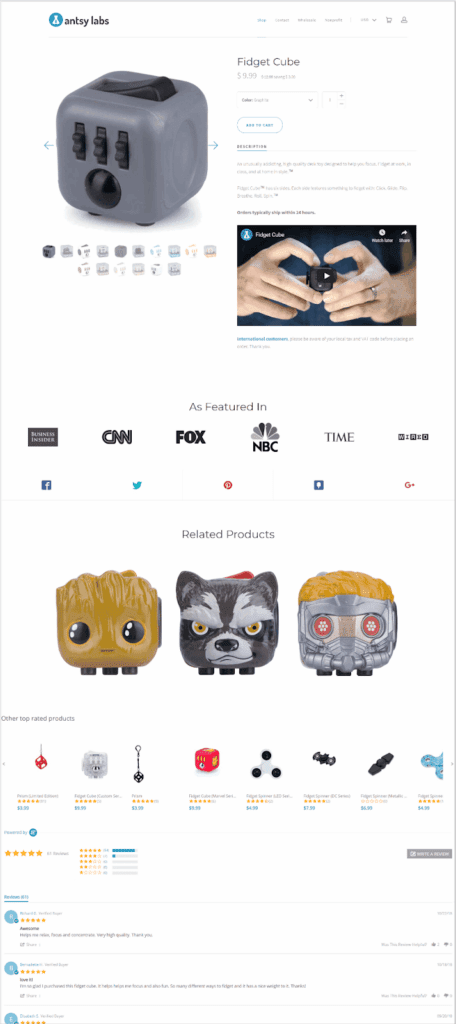
Obscure reviews: Site visitors must scroll to see that other customers have rated this product on AnstyLabs.com.
Rating and review indicators should be visible the moment the screen loads. However, they should also be located where users expect them to be.
For instance, H&M’s product detail page breaks predictability as the rating and review indicator is at the bottom of the screen. The average rating is not likely to help persuade the visitor to add the item to their cart. It’s bound to be ignored, as it’s in an unconventional location:
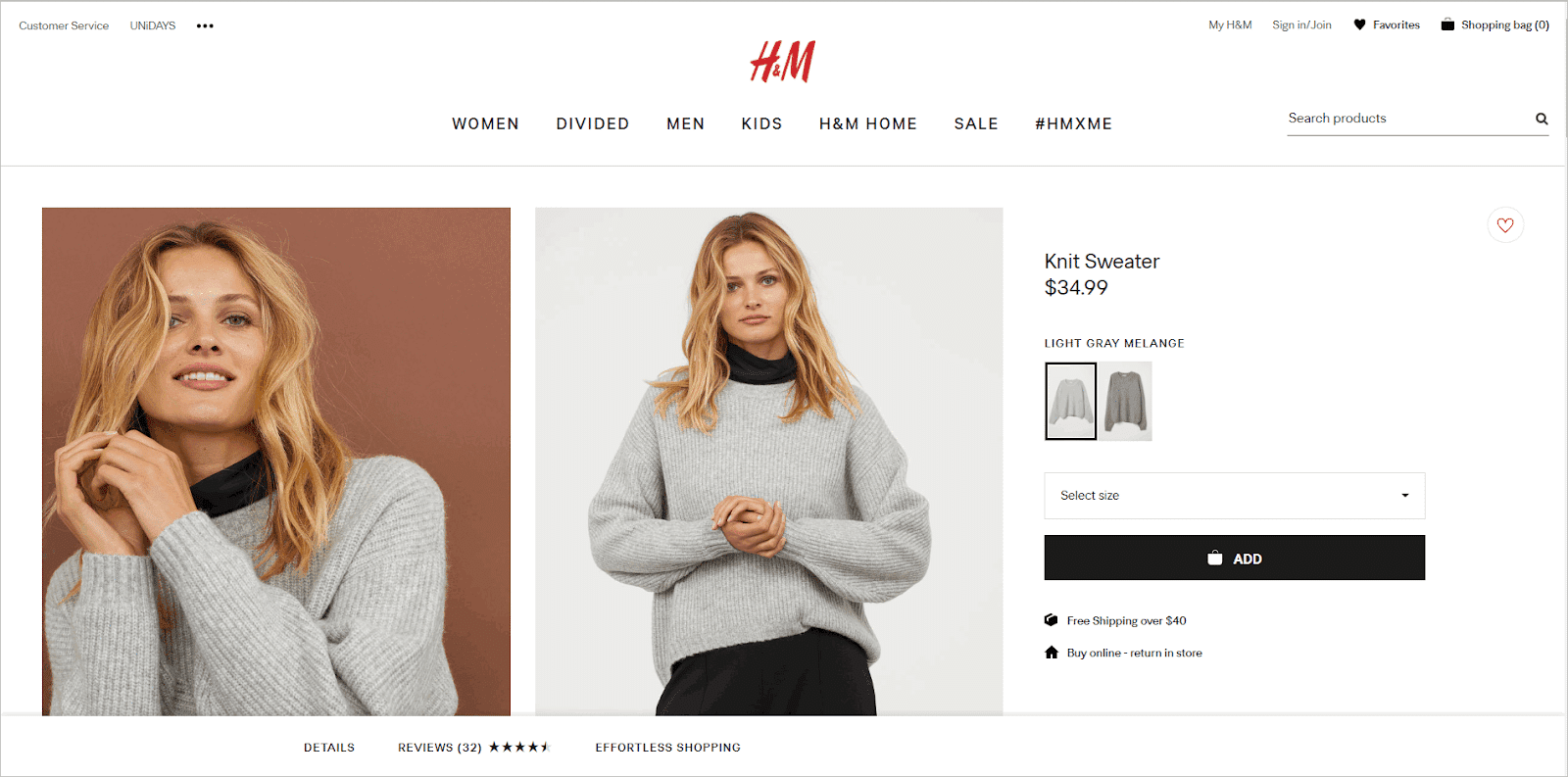
Unconventional placement: H&M’s rating and review indicator is bound to be missed, as it’s not where users expect it to be.
Do NOT leave out negative reviews
It can be tempting to put your best foot forward and highlight the positive reviews while making the negative reviews slightly less accessible. To respond to reviews effectively, maintain a positive and professional tone, regardless of the review’s sentiment. Acknowledge and appreciate positive feedback, and address negative reviews calmly and constructively, offering solutions and assuring the customer that their feedback is valuable to your business. Remember, potential customers, watch how you engage with reviews, so always strive to maintain professionalism and courtesy in your interactions.
Resist the urge.
It would be best if you were balanced so that visitors would trust you. What you’ll end up with are products with both great and crappy ratings, but on the whole, users will be more likely to trust you and buy from you.
Explore our insights on The Psychology of Persuasion: How to Influence User Behavior to understand how persuasion can impact customer behavior and enhance your review management strategy. Discover techniques that address negative feedback constructively and amplify positive customer experiences.
Research conducted by social commerce company Reevoo showed that …
- 68% of consumers trust reviews more when good and bad ratings are present.
- 30% of consumers become skeptical and suspect censorship or faked reviews when there are no bad reviews.
- Those who take the time to read bad reviews are 67% more likely to convert. Shoppers who look for negative reviews are typically highly engaged in the pre-purchase research.
Responding to unfavorable reviews can mitigate the effect. For instance, if the poor rating is due to a defective product, you can tell the shopper about your replacement guidelines. This way, you address the customer’s concern and, at the same time, show other shoppers that you provide great post-sales support.
Responses from the Lego team are personalized but valuable. This example provides the user with the next steps rather than a dead end.
Enable feedback for ratings
It would be best if you had feedback. No, I’m not talking about the reviews themselves – you already know that.
I’m talking about the reviews of the reviews.
So many websites ask if a review is helpful because it works. It generates more attention to the most useful, amusing, or informative reviews, where more users are likelier to spot them.
Zappos.com lets users rate reviews.
Optimize customer-submitted visual content
Photos and videos submitted by other customers are essential in gaining a shopper’s confidence in a product.
There are a few critical factors to consider when creating video testimonials. Firstly, you can approach your customers as you would for written testimonials, but with the added aspect of filming them.
This means you must consider logistical considerations, such as whether you will travel to your customer’s location, hire a production company, or have in-house resources and capabilities to handle the filming process. Making it convenient for your customers to speak positively about your business is crucial. By taking control of the production process, you can ensure the video’s quality and guide your customers to provide the necessary footage that will help build trust with potential prospects.
However, it’s essential to acknowledge that this approach can be resource-intensive, requiring a significant budget. Overall, creating video testimonials can be accomplished by either managing the production process yourself or utilizing user-friendly apps that simplify the recording and sharing process. Consider the resources available and choose the approach that aligns with your budget and goals.
This strategy leverages visual content and enriches your customer review strategy, making it more compelling and trustworthy for prospective customers.
Consider these numbers from ProductReviews:
- 88% of consumers look for visuals like photos and videos submitted by other users before purchasing.
- Products with reviews with visual content can have a 69% lift in conversions compared to those without.
- 72% of consumers say they’re more likely to purchase a product with reviews with visual content and text.
- 44% of shoppers consider a customer-submitted photo more valuable than that from a retailer or brand.
This makes sense, as people generally trust photos uploaded by other people more compared to shots of models who are specifically there to make the product look good.
This means that features related to image submissions for reviews are some of the most important things to consider. Getting it right can have a huge payoff:
Make submitting visual content easy
When you ask customers for reviews, ask them to include photos and videos. And since visual content is primarily captured on phones, make sure it’s easy to upload photos and videos from mobile devices.
Also, make collecting photos and videos from shoppers efficient for your company. Let customers natively submit content through your website instead of having them upload the content to a third-party service first.
Make customer-submitted visual content easily discoverable
Make it immediately evident that customer-submitted visual content is available on the product detail page. Otherwise, the shopper may leave your site to look for user-submitted visual content elsewhere.
Your goal is to provide the shopper with all the information they need to make a purchase decision in one place so they don’t leave and buy elsewhere.
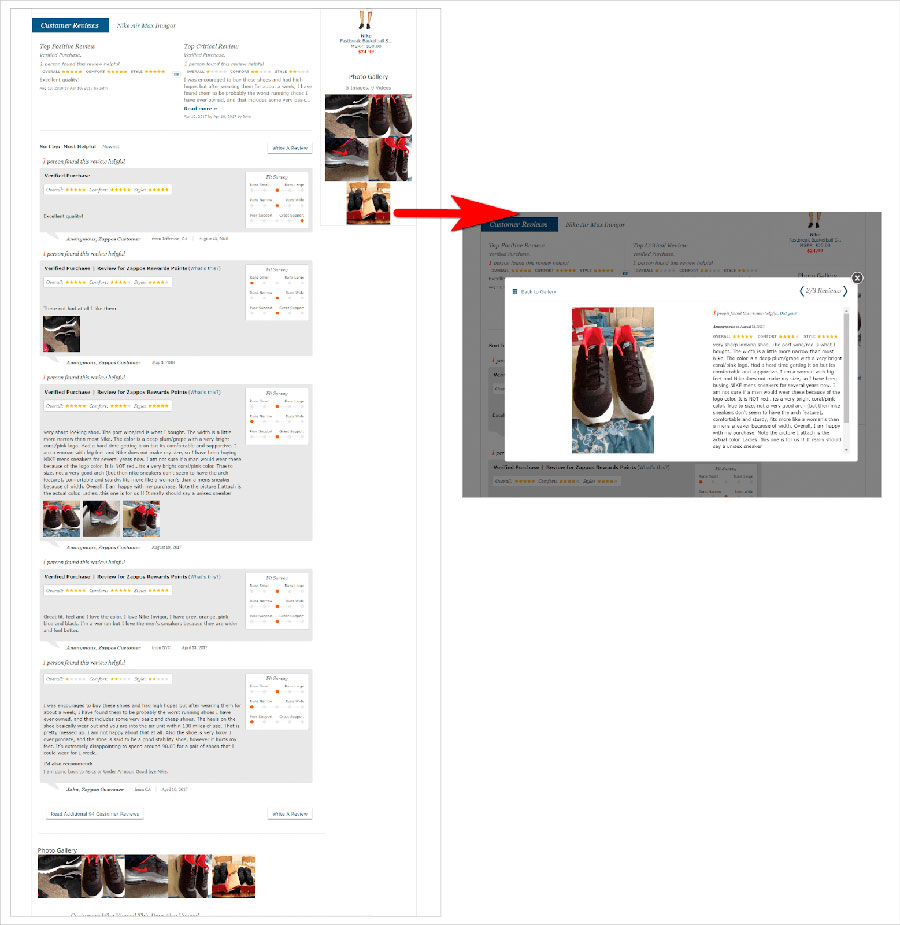
Zappos.com’s photo gallery at the top of the Customer Reviews section immediately shows that reviews include customer images. They also make the accompanying written text accessible—when the user clicks on an image, a popover with the customer’s comments appears.
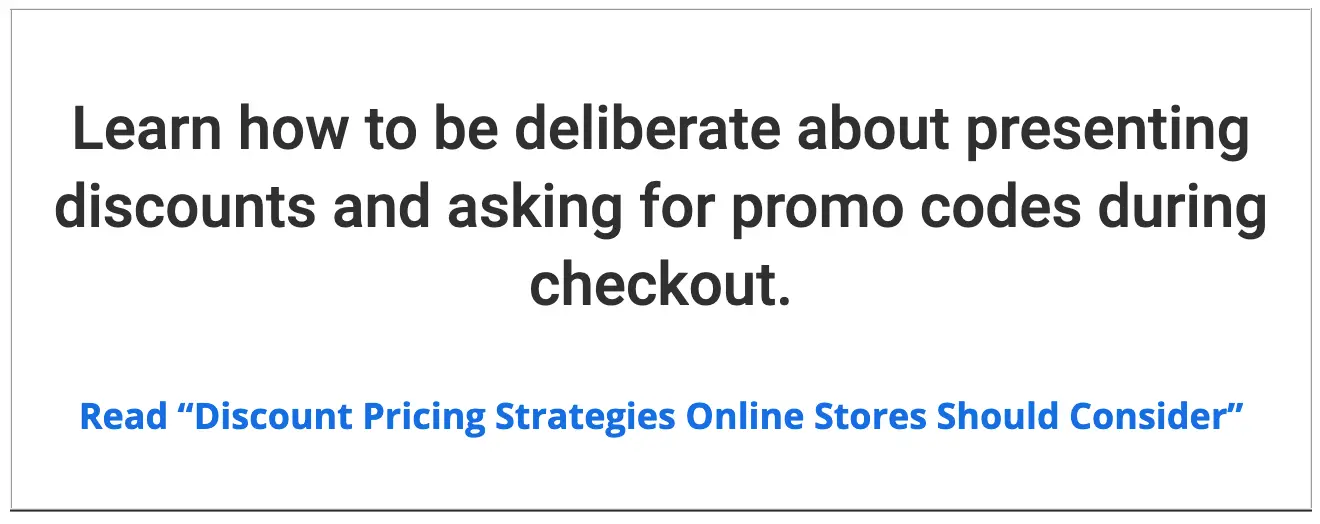
Tailoring Reviews for User Relevance
Display relevant averages
This is going to sound obvious, but enough websites do it to warrant a warning:
Only show average ratings if you have enough ratings.
Pick a threshold, and only display averages once you reach that threshold.
Showing an average score prematurely can backfire, as people might not realize that the score is only based on a couple of reviews and does not speak to the quality of your product or service.
This pair of jeans, for instance, looks poorly rated at first glance. The score, however, is based on just one review:
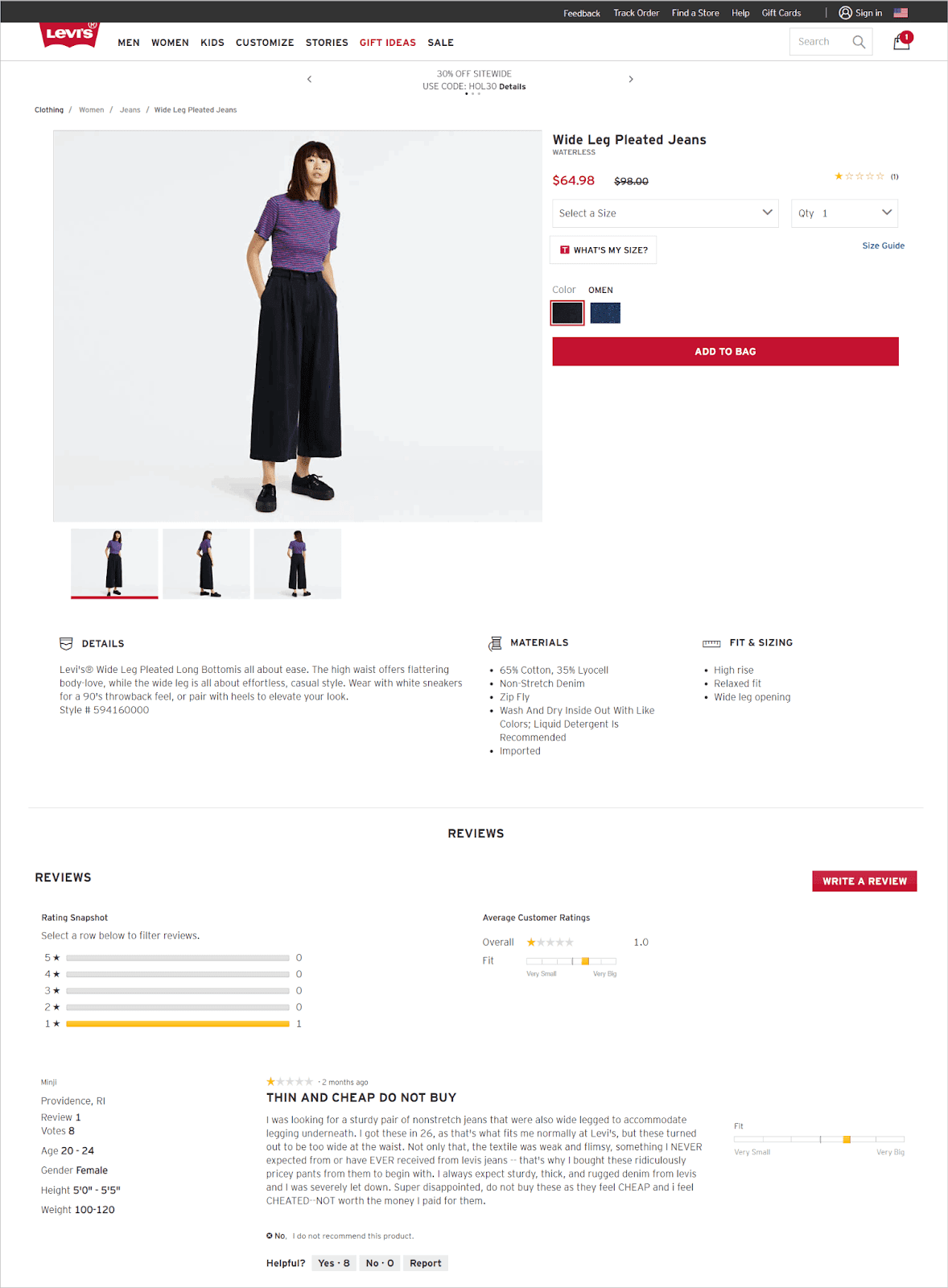
Booking.com, on the other hand, avoids that problem – the site does not display an average rating unless the property has received at least 5 reviews:
Booking.com’s property detail page communicates to users that the site does not display an average score unless the property has at least 5 reviews.
Let users filter by customer type
In many cases, the review is not the only factor that matters. The “type” of reviewer is also essential.
In the hotel industry, for instance, a room may be perfect for backpackers on a budget but not suited for couples on a getaway. So, hotel reviews must be segmented by the types of guests. In this particular case, you can have “families,” “solo travelers,” “business travelers,” and “couples” as your core types.
This will allow visitors to find the reviews that are most relevant to them, which can, in turn, help you convert them into customers.
Segmentation by customer type is also beneficial for online clothing stores. American Eagle makes it easy for shoppers to find reviews from customers with the same body type. The site allows the user to filter reviews by height and weight.
Avoid negative social proof
Having ratings for some products and none for others can lead to negative social proof. It will give web visitors the impression that the products without reviews are subpar.
PartyCity.com’s category page, for instance, can be improved by having something like “Be the first to review” for products that have not been rated. Or, they can add a callout to indicate that a product is new, so users don’t wonder why certain products have no stars:
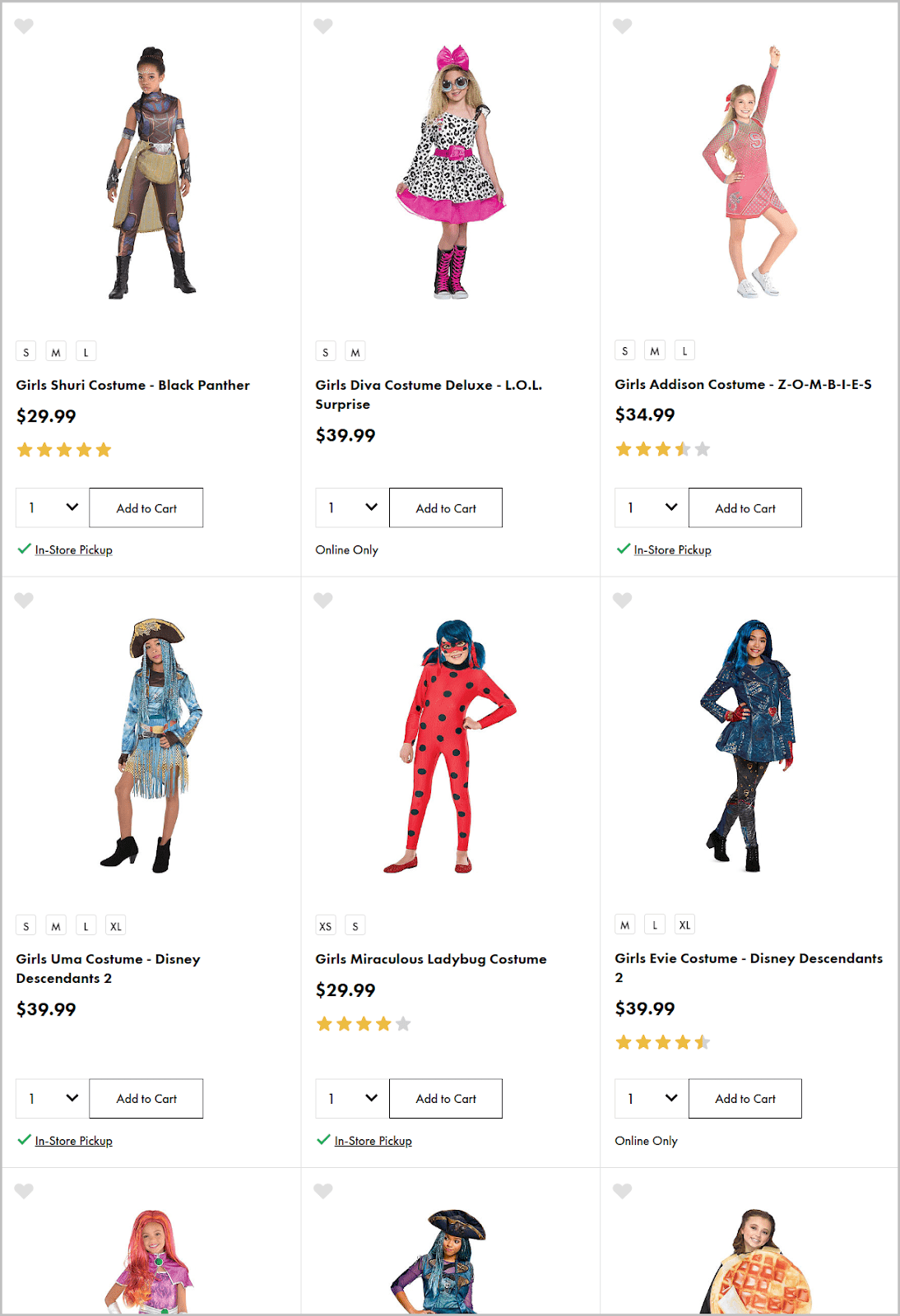
Collect reviews
Unfortunately, the saying “If you build it, they will come” is not true about customer reviews. Just because people can leave reviews on your page doesn’t mean they will automatically write reviews. (Often, people will only feel compelled to write a review when they’ve had an exceptionally terrible experience.)
Send post-purchase e-mails to get online reviews from customers
PowerReviews data show that up to 80% of reviews come from post-purchase e-mails asking customers to review what they bought.
Remind customers to write a review by sending a follow-up e-mail after they’ve received the product. The timing depends on what the customer purchased. For instance, if the customer is likely to notice improvements two weeks after using the beauty product they bought, send a follow-up e-mail afterward.
Here are a couple of things to keep in mind when creating your post-purchase e-mails:
Keep it focused
- Keep the e-mail simple and direct.
- Place essential elements in the upper section of the e-mail. This way, it’s immediately apparent to customers what you want them to do even if they don’t scroll down.
- The goal is to collect reviews, so make “Write a review” a call to action and a prominent button that users can easily tap on mobile.
- Don’t include other elements that could distract customers from completing the task.
Personalize
Address the customer by their name in the body of the email and use it as the subject line. Experian’s 2013 Email Market Study revealed that “personalized subject lines have 26 percent higher unique open rates than non-personalized emails.”
Optimize for mobile
Remember that more than half of emails are opened on mobile devices. Emails should be optimized for smartphones.
- Aside from making subject lines compelling, ensure they’re not truncated on mobile.
- Use a single-column e-mail format instead of a multi-column layout to avoid the risk of the e-mail appearing broken on smaller screens.
- Use a font size that’s easy to read on any device.
Make writing a review effortless
Don’t make shoppers jump through hoops to post a review. Make the process as effortless as possible, and allow users to read and submit reviews using different devices and platforms.
Incentivize reviews
Give customers something in return to motivate them to leave a review. Acknowledging and appreciating their input can encourage customers to share feedback and help generate positive reviews, which can foster a sense of loyalty and motivate customers to share their positive experiences more openly.
- If you have a rewards program, award points to the customer’s account.
- Offer the customer a discount on their next purchase (e.g., 5% or $5.00 off, whatever makes sense for your business).
- Encourage detailed reviews accompanied by visual content by rewarding those who submit them with gift certificates.
Antsy Labs sends a follow-up e-mail two weeks after the customer receives their order. They ask the customer to write a review in exchange for points for their next purchase.
Send out samples
The initial reviews have the most significant impact on sales increase. According to Spiegel Research Center, “the increase in purchase likelihood occurs within the first 10 reviews, and the first five reviews drive the bulk of this increase.”
One way to generate initial reviews for new products, aside from follow-up e-mails, is by sending samples to shoppers.
Urban Decay sends product samples. They then send a follow-up email nudging the shopper to buy the full size and write a product review.
Use a third-party review provider
Collecting enough reviews to make your product pages persuasive could take some time. One way around that is to use a third-party review provider like Reevoo.
Reviews from third-party providers are authenticated, so shoppers know they were written by someone who bought the product.
These reviews, however, are syndicated. So, one downside is that they do not specifically tell potential customers about the experience of buying from your site.
DrMartens.com uses Reevoo, a third-party reviews provider.
Leveraging Customer Reviews for Conversion Optimization
The Three Wolf Moon shirt review was lightning in a bottle, so sites are unlikely to get the same kind of boost. Still, you don’t need to hit it out of the park every time. It would be best if you used reviews smartly to capitalize on the gains:
- Keep the customer rating and review indicators above the fold so visitors can easily spot them. Make it immediately apparent that your products have reviews.
- Don’t ignore negative reviews. Instead, take this opportunity to reach out to your disgruntled customers and provide great customer service, which can help generate positive reviews.
- Let users rate the reviews so that the best ones stand out and visitors can easily see the most helpful ones.
- Allow users to add visual content (and actively encourage them to do so) to boost confidence in your products.
- Display averages only when you have enough reviews. Showing an average rating too early can negatively affect the shopper’s perception of your product.
- Improve the relevance of your customer reviews by allowing users to filter by customer type. This way, shoppers can easily find the reviews that matter to them.
- Avoid negative social proof for products that don’t have reviews. You can indicate that the product is new or invite users to be the first to review the product.
- Actively collect user reviews by giving out incentives. You can award points, discounts, or product samples to convince customers that spending a little time to share their experience about your product or service is worth their while.
If you do these, you’ll have another great tool to optimize the site to add to your toolbox.
Editor’s note: This post was originally published on February 10, 2014, and has been updated to reflect new best practices for using customer reviews to improve conversions.
Conclusion
The power of customer reviews and testimonials in today’s digital marketplace cannot be overstated. As we’ve seen through various studies and real-world examples, such as the Three Wolf Moon T-shirt phenomenon, customer feedback plays a crucial role in shaping consumer behavior, building trust, and driving conversions. Businesses must recognize the importance of managing and leveraging reviews to maintain their reputation and foster growth.
To optimize the impact of customer reviews, businesses should focus on making reviews visible and accessible, responding to both positive and negative feedback constructively, and encouraging satisfied customers to share their experiences. By adopting best practices for online reviews and integrating them into their marketing strategies, companies can harness the power of social proof to enhance their online presence, attract more customers, and ultimately achieve tremendous success.
Remember, in the digital age, your customers’ voices are louder than ever. Embrace their feedback, learn from it, and use it to propel your business forward. Utilizing customer reviews in marketing and leveraging consumer review websites can significantly enhance your online presence and drive business success. The journey to mastering the art of customer reviews is ongoing, but with the right approach, the rewards are well worth the effort.
